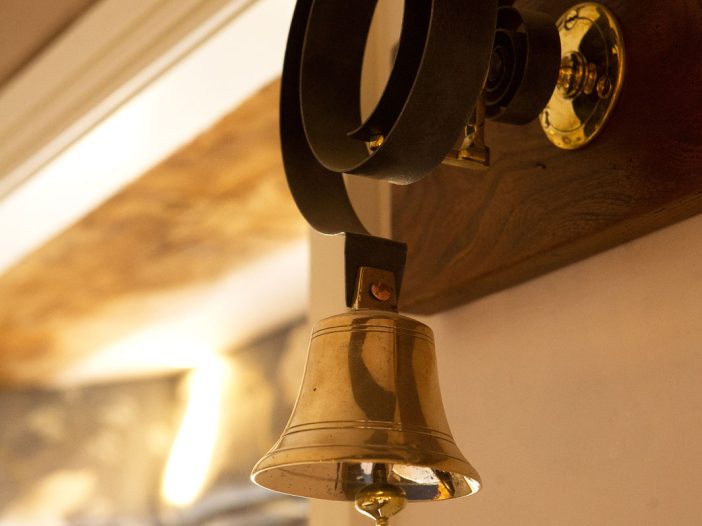
Andy and Gail acquired the property in 2019 in a state of dereliction and near collapse.
While many original features had been lost over the years, much of the original fabric remained hidden beneath layers of inappropriate 20th-century alterations. The first year was dedicated to stripping out 1960s modernisations and fire hazards, including the removal of polystyrene tiles from ceilings and walls, as well as gypsum plaster, cement render, and modern paints and wallpapers. We also removed bitumen and concrete from the kitchen floor, along with rotten floorboards and joists from the lounge. This restoration allowed the house to “breathe” again, significantly reducing moisture levels.
During the process, they uncovered 6-foot deep foundations of an original supporting wall that had bisected the building. This wall had been replaced in the mid-19th century with a substandard load-bearing beam to create a “snug,” which was built without proper foundations. As a result, the middle of the house was collapsing due to a lack of support for the roof structure.
The first floor was similarly compromised, with floorboards replaced by MDF. A leaking roof had led to the rotting of roof timbers, floors, and partition walls, while much of the external brickwork was damp and deteriorating due to moisture trapped by cement render and non-breathable external paint.
The restoration project has been extensive and challenging, exacerbated by limited practical support from the local council and conservation officer. Their goal was to restore The Wheatsheaf using materials appropriate for a building that is over 300 years old.
They replaced much of the external brickwork with reclaimed Georgian bricks that matched the originals, using softer lime mortar instead of cement. Green oak was used to replace the concrete lintels added in the 1960s.
Where possible, they retained the original roof timbers, reinforcing them with modern joists. Reclaimed oak floorboards dating from 1702, sourced from local woods and commissioned by notable figures like Nicholas Hawksmoor and Christopher Wren, were installed in the downstairs lounge and bedroom 4 on the second floor. Antique elm was sourced to restore the hardwood floor throughout the first floor, with the elm in Harold Furness’s room and the bathroom being original to the house.
Lime plaster was applied throughout the ceilings and walls, followed by breathable casein distemper paint. Partition walls and ceilings were insulated with hygroscopic sheep’s wool, allowing moisture to be absorbed when damp and released when dry. This approach prevents condensation, dampness, and the risk of rot in the house timbers.
They excavated the ground floors and laid a thick layer of Glasscrete, which prevents moisture from rising from the soil and provides insulation. This was followed by a permeable membrane and a solid limecrete base, creating a fully breathable floor that minimizes damp and heat loss from the underfloor heating system. Finally, oak floorboards were placed in the lounge, and 200-year-old York stone slabs were installed in the kitchen.
Most of the windows had been replaced with unattractive, draughty 1960s single-pane designs. Historical photographs from the turn of the 19th century revealed that the original windows were 6/6 sashes, which they reinstated using hardwood, handmade windows crafted on-site.
They also restored mid-18th century fireplaces throughout The Wheatsheaf, with particular attention to the beautifully figured Hobgrate in Bedroom 2, reminiscent of a Gainsborough painting.
The final touch was sourcing and furnishing the house with appropriate antiques. The interiors now feature 18th-century furniture, including early 30-hour long case clocks, hand-carved George II and George III chairs upholstered in exquisite period fabrics, a stunning late 18th-century chest on chest, and period oil paintings adorning the walls.
A photograph from 1910 showed the exterior paved with cobbles and blue engineering bricks. Gail and Andrew made efforts to reinstate the original layout using authentic materials as much as possible, as illustrated in the accompanying photos.
Please find below several images showcasing the condition of the house at the time of purchase and its appearance five years post-restoration.



